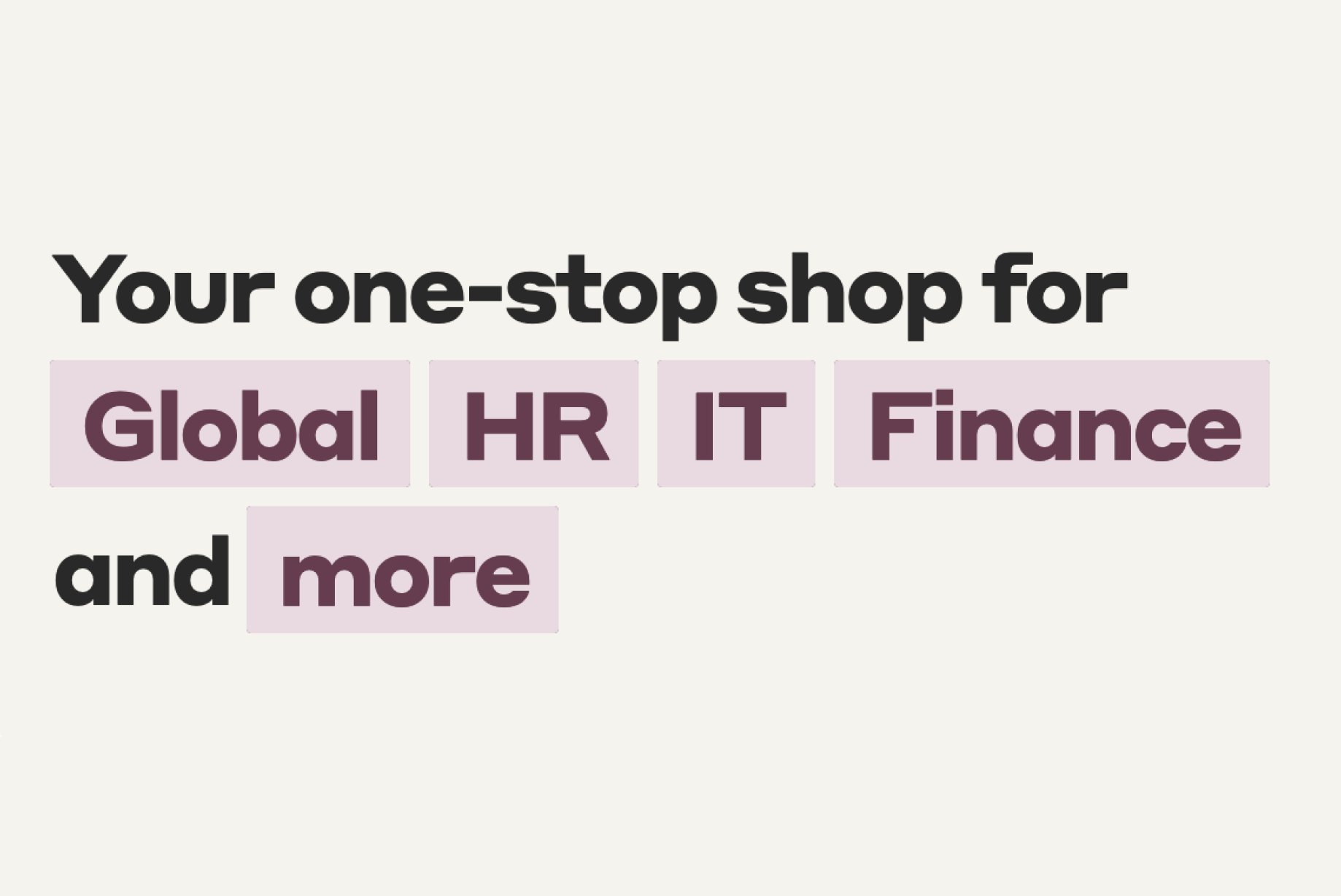Many companies have a document that new employees receive when they first join, laying out certain values that are important to the organization. They often include things you’d expect: lead with positivity and empathy; do the right thing even if it’s hard.
San Francisco-based Rippling has one too, laying out principles for its leaders to follow: Rippling leaders “go and see” problems in person; they should set “maximally ambitious goals” for their teams and themselves.

The question leads to a story from the company’s earliest days that in its repeated retellings turns that phrase into internal shorthand illustrating Rippling’s fierce determination to do right by customers when something goes wrong.
It was a Friday afternoon in mid-2019, Rippling’s early days. A handful of employees, led by CEO Parker Conrad and COO Matt MacInnis, learned that a software error had upended what should have been a routine payroll run for its customers.
It wasn’t uncommon for the support team to get emails about hiccups in the payroll process. Rippling runs payroll services for thousands of businesses with 2-2,000+ employees in scores of industries (though back then the number was smaller). Often when someone incorrectly enters their banking information, they don’t get paid, and the problem is quickly fixed. This time was different.
“We received 50 inquiries about people not getting paid, and the volume was growing,” Matt MacInnis recounted in a late 2023 interview. “We saw that while a big portion of the payments had gone out, another big chunk had not.”
One customer’s French-derived name included an accent aigu, found in words like café or cliché. The software passing client information to the banking system couldn’t process that accent, and upon seeing it stopped processing payments entirely.
“Everyone who was above the name with that character on the list got paid. Everyone below didn’t,” Matt explained.
A software fix was simple. And for the most part, so was telling the CEOs of the companies not getting paid that day: most were fine to wait until the following Monday. A few were not.
“There was a trucking company, and we told its CEO that its employees wouldn't get paid until Monday. There was this dead silence. He said, ‘This is a big deal.’”
Some of that company’s employees had missed a payment or two on their mortgages. A third strike meant losing their home. “The gravity of it all hit us,” Matt recalled.
The one reliable way to send money to those companies on a Friday: Western Union. Parker, Matt and a few others took as much cash as they could from their personal bank accounts and together they headed to a kiosk at a CVS drugstore in San Francisco to wire money to affected customers — including that trucking company, which remains a Rippling customer to this day.
Back then, Rippling had only 150 employees and was just getting its footing. Today, it’s a thriving company that offers two dozen cloud-based software products for small businesses spanning the areas of HR, IT, and finance. In addition to running payroll, customers use it to manage employee benefits, administer computers and phones, oversee company expenses, and pay the bills. It has more than 2,000 employees around the world and over 10,000 customers.
Kleiner Perkins formally started its journey with Rippling at the Series A, led by partners Mamoon Hamid and Ilya Fushman.
At the time, it was an eyebrow-raising investment in a founder that had a well publicized departure from the first company he founded, but whose true character was better known to Hamid and Fushman.
How Parker and Rippling reached this point is a long and complicated story. And it’s impossible to tell without going back to Parker’s first company: Zenefits.
 Launched in 2013, Zenefits aimed to disrupt the HR and insurance benefits business for small companies, and over three years it succeeded, selling a cloud suite for running payroll and health benefits. It also sold health and other insurance policies. By 2016 the company was worth $4.5 billion and seemed on its way to large-scale success.
Launched in 2013, Zenefits aimed to disrupt the HR and insurance benefits business for small companies, and over three years it succeeded, selling a cloud suite for running payroll and health benefits. It also sold health and other insurance policies. By 2016 the company was worth $4.5 billion and seemed on its way to large-scale success.
However, sales had slowed, as they were managing some regulatory issues. The lead investor and board member asked Parker to step down as CEO and take a role overseeing its product. He resigned instead.
After he left, a negative media narrative about the company left an indelible mark on the Zenefits name, and by association on Parker's reputation. The company soldiered on under new management and ultimately sold to TriNet in 2022.
Looking back on Zenefits in an interview, Parker said, “There’s another side to the story, and one of the hardest things for me back then was that I couldn’t say anything in public about it.” He otherwise stayed quiet about Zenefits, and even today it’s not something he relishes discussing.
Despite its ignominious end, the vision of what Zenefits could have been never left Parker’s mind. It wasn’t long before the idea for what would later become Rippling began to form.
What made Zenefits work was the “magic button” that automatically started numerous processes once an employee was hired: payroll setup; applications for health, dental, and vision insurance; 401k enrollment. “The employee entered their information, and then you clicked one button and all these things just happened,” Parker says.
Rippling is rooted in the realization that when you look outside the Human Resources department, there’s a significantly bigger opportunity in managing employee information. By treating it as business software primitive, it can be used as a building block for applications that run all over the company, not just in HR.
As the idea took hold, the scale of the product Parker now wanted to build expanded far beyond what Zenefits could ever be, and the only way it could ever exist was to build it himself.
And yes, he had other motivations. There was no denying that Zenefits’ failure had taken its toll on Parker’s good name and there was no easy fix for that.
“The only way for me to salvage my reputation and to talk to my former colleagues and the wider tech community was to build a new successful company,” he recalls. “If I were to do that, it would eventually force a reassessment of me and of everything that happened.”
Having first met Parker in 2013, Mamoon got to know Parker’s character over the years. He and Ilya viewed the criticism as reactions informed solely by the press coverage of Zenefits. “The coverage led people to misjudge Parker,” Mamoon said.

The more they looked, both at the facts surrounding Zenefits and the vision for Rippling, the case for investing was clear to them. Mamoon called it “extreme conviction.” The size of the $25 million check that Kleiner wrote to lead Rippling’s A round in 2019 said it all: it was to that point the largest early-stage investment that Kleiner had ever made.
“We had a fundamental belief in Parker as a founder, operator, and visionary,” Mamoon said.

So what is the Rippling journey exactly? There are, Matt says, three ways to understand Rippling’s business. Comparing them to university classes, he calls the first the “100 level,” and it’s the easiest to understand.
“You get that we sell a payroll service, and if you buy it you get benefits,” Matt says. “If you need device administration or corporate cards and expenses, we can sell you those. Most of the customers who buy from us think of us in that bucket.” But that’s just scratching the surface.
Next is the 200-level: Rippling is a business application suite. “You come in through our front doors, whether it�’s payroll or device management, and you see that we run a single suite of applications where all of the employee data and applications are under one roof and running on the same rails,” Matt said. “As you add more of what we have to offer, you simplify the daily life of your company.”
And the 300-level? “Rippling is a data system.” He hints at undiscovered islands of product market fit that are just beyond the horizon line. If you can sail out and make it there, everything else about your company will work.
Managers, no matter their function, Matt says, need information about their teams. Bringing it all into a single platform creates an opportunity to see how — or if — their team is creating value.
“What we’re trying to do is fundamentally change the way managers do their jobs,” Matt says. “It’s not about how finance runs payroll or how HR runs its system. Those are critical, but a company that runs Rippling simply does better than a company that doesn’t. That’s because every manager is more informed, and able to make better and faster decisions. If I were to put it on a billboard it would say ‘Rippling customers are kicking your ass.’ They’re more efficient and they execute better.”
And there’s evidence to back up that claim: when an independent research firm compared the LinkedIn data of Rippling customers with 1,000 employees or fewer, it found they averaged 26 employees in administrative roles. For non-customers of the same size, the average was 48.
Today Rippling offers more than two dozen distinct product SKUs, and is adding more all the time. New products are often overseen by one of the 100-odd former founders of failed startup companies that Rippling has hired.
“What they’ve found is that startup founders tend to be great product managers,” Ilya said.
Each product team runs like a seed-stage startup company. Their goal is to reach a million dollars in annual run-rate within a month of launch. Once a new product goes live, Rippling turns the demand firehose. Those that meet the goal get more investment. Those that don’t get retired, and their product teams move on to the next idea.

Salesforce, which launched in 1999, had in two decades built or bought its way to a comprehensive suite for everything a business needs related to managing its customers. But there was no company taking a similarly expansive view of something Parker considered equally important: employees.
For instance: a company’s IT department needs employee data to provision cloud resources and make purchasing plans. Its finance arm must plan to grow or cut headcount. While those functions are interconnected, they tend to work separately and with siloed sets of data, and as a result, they’re working with different assumptions.
What didn’t exist, Parker realized, was a single source of truth for employee data from which literally thousands of different and crucial corporate functions could spring forth. Once you know that companies spend more time on administrative work than strategic work, the potential impact for thousands of companies might be enormous, perhaps even bigger than Salesforce.
“VCs talk about what they consider the total addressable market that their companies are going after, and no one can ever quite figure out what it really is,” Ilya said. “But Rippling clearly has an unbounded total addressable market — it could be in almost every company.”
 Slowly at first, then faster over time, the memory of Parker’s entanglements with his prior company faded. Rippling’s momentum increased. By mid-2018, its team of about 50 engineers had built a nearly viable product.
Slowly at first, then faster over time, the memory of Parker’s entanglements with his prior company faded. Rippling’s momentum increased. By mid-2018, its team of about 50 engineers had built a nearly viable product.
However, it lacked something early customers badly needed: insurance. Knowing that they would not get the benefit of the doubt if something went astray, they made sure the product was airtight ahead of launch.
Once the benefits and insurance pieces were in place, growth took off. “Once we did benefits, we went from adding $10,000 or $20,000 a month to about $100,000 a month,” Parker said. And it kept accelerating from there.
Rippling’s underlying insight has proven to be its North Star: hiring people creates busy work; minimizing it saves time and money.
“When you hire someone, you have to enter their info into a bunch of different places,” Parker said. “When that information changes, a lot of those systems are implicated. More often than not, those changes which should be easy are done by hand in a time-consuming way. Rippling fixes that.”
Business-to-business applications have a well-earned reputation as the software people love to hate. They don’t ask users to enter much information because to do so complicates adoption. The result is that they’re less useful to the managers who need them to do their jobs.
“Most business software applications don’t work well because they don’t understand who your employees are and what their job function is,” Parker says.
That means basic business processes get delayed for what can only be described as stupid reasons — just ask anyone who’s ever needed an approval from someone higher up the org chart than their immediate manager.
Analyzing data for information that might be useful to the business has also suffered. It’s one thing to look at transaction data from say, an expense reporting app or GitHub pulls. But what if you could combine that data with specific job roles or with locations or years of experience?
“Companies build elaborate data stacks to get insight from their data,” Parker said. Expensive and complex business intelligence tools essentially take data from one application, mix it with another, and build charts and graphs intended to make sense of it all. “If you have that ability built-in, you don’t need all that complex rigamarole to get insights.”
Where it leads is this: Rippling’s play is essentially to rethink and rebuild an entire phylum of business software based on a deep understanding of who employees are, their job roles, and their relationship to each other.
“I think that a lot of the conventional wisdom concerning how business software has been built over the last 20 years is wrong, or at least misguided and incomplete,” Parker says. “We can rebuild all kinds of software across many different verticals with a deeply embedded understanding of employee information right in the foundation.”
 In the early days, selling Rippling was simple. Targets were small, and usually had only one or two people handling its administrative work — sometimes it was the CEO doing it. “You’d often see a single person doing onboarding and running payroll, setting up the Slack and GitHub accounts, and ordering the computer,” Parker says. Doing all of that in one place has been a compelling proposition.
In the early days, selling Rippling was simple. Targets were small, and usually had only one or two people handling its administrative work — sometimes it was the CEO doing it. “You’d often see a single person doing onboarding and running payroll, setting up the Slack and GitHub accounts, and ordering the computer,” Parker says. Doing all of that in one place has been a compelling proposition.
The first customer wins came with small companies of 100 employees or fewer. But gradually the targets grew bigger as firms with up to 1,000 employees signed on with increasing frequency, Parker explains. “Once people saw that Rippling did everything they needed in one single system, suddenly we could flip a lot of companies from competing products.
How big will the customers get over time? Parker says about 80 to 90 percent of Rippling’s market opportunity lies with companies of 2,000 employees or fewer. He aims to win companies with up to 5,000 employees and hold on to them until they reach 30,000.
“We don’t necessarily aspire to win new customers above 5,000, maybe ever,” he says. “But we want to retain them until they’re ready to move on to something else.”
Rippling itself has grown to about 2,000 employees with locations in North America, Europe and Asia. And yet despite that growth, there’s only one person who serves as its admin: Parker himself.
“I am the admin for Rippling. I run payroll for those employees myself. I manage their benefits. I manage their devices and IT policies,” he says. “Despite everything else on my plate as CEO, I do all of it.”
It fits the original concept that Parker envisioned. “We’re relentlessly focused on creating a product that can be used by just one person in a company. And I get it, customers aren’t likely to do it that way, and we don’t even recommend it, but the fact we can and do is a testament to the product.”

